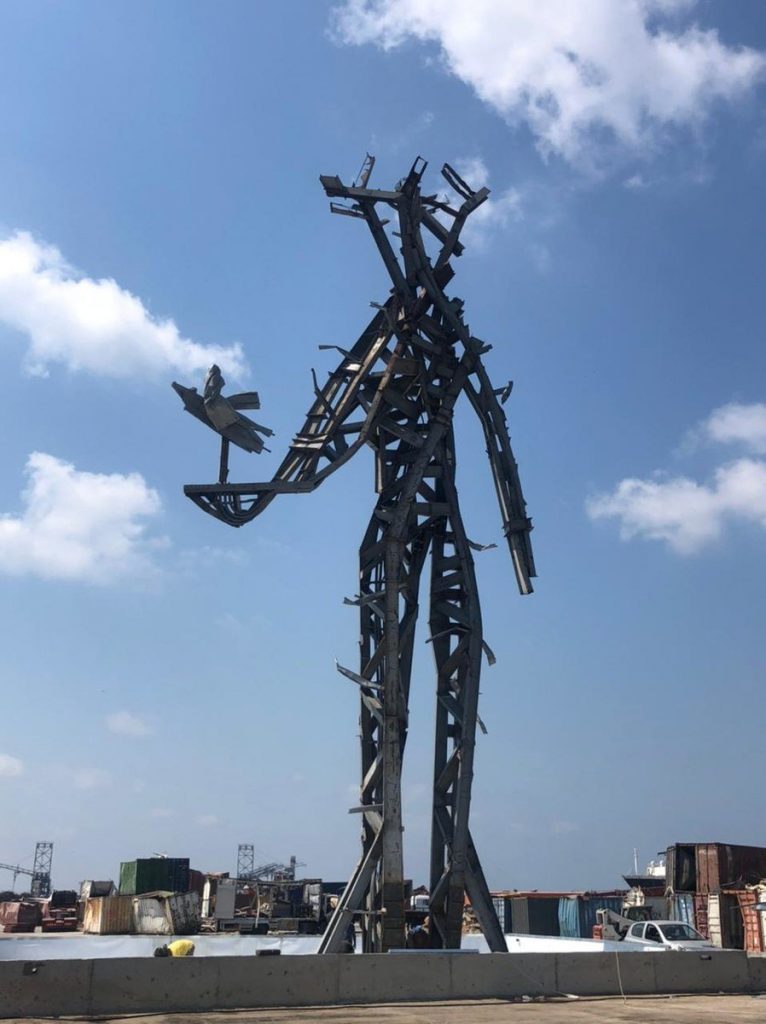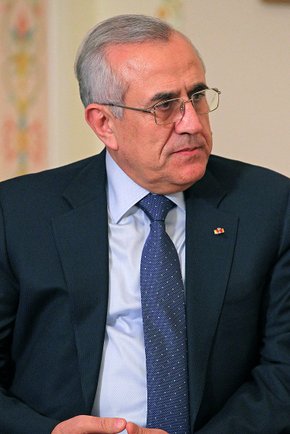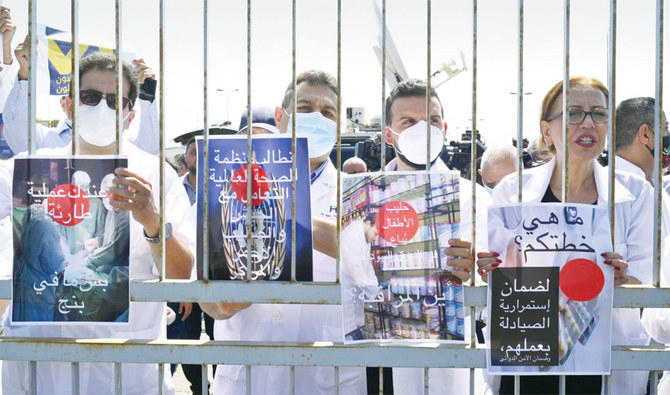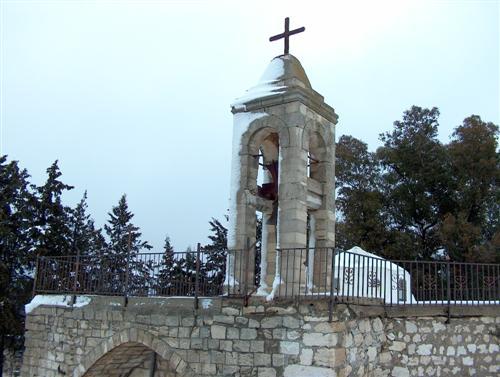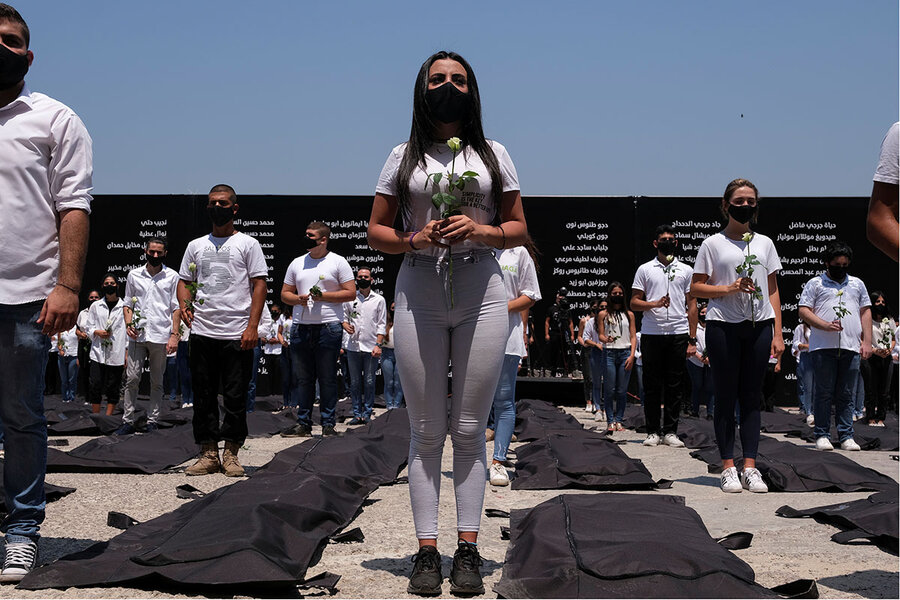
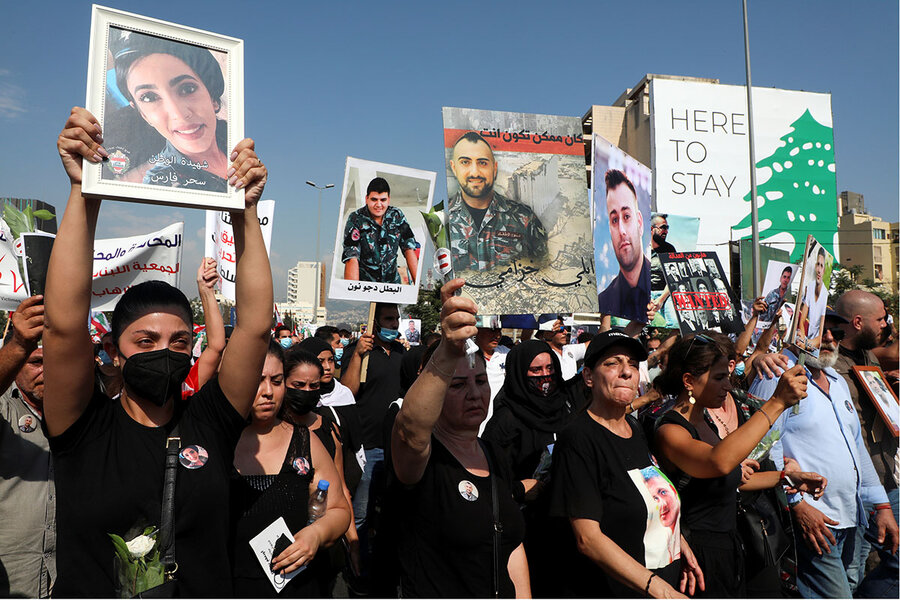
People carry photographs of victims of last year’s devastating explosion, in a march in Beirut demanding accountability and justice, Aug. 4, 2021
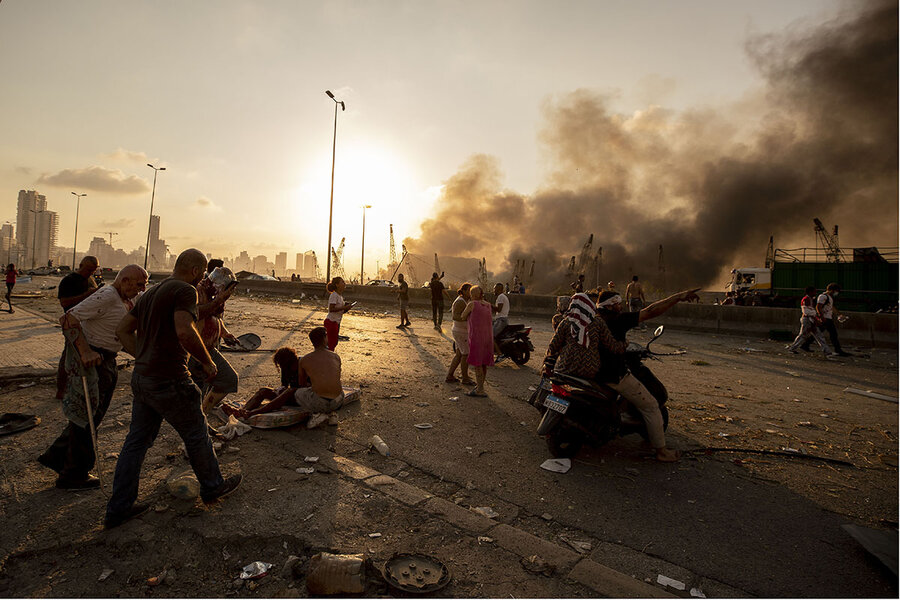
Wounded people are evacuated after a massive explosion in the port of Beirut, Aug. 4, 2020. A year later, families of the victims are consumed with winning justice for their loved ones and punishing Lebanon’s political elite, blamed for causing the disaster through corruption and neglect.
By csmonitor.com — By Scott Peterson — No Lebanese citizen who felt the shock wave of one of the largest non-nuclear blasts in history will ever forget its destructive power – or that it signaled a new low of negligence and corruption for Lebanon’s political elite. The explosion a year ago of ammonium nitrate, poorly stored in Beirut’s port, destroyed swaths of the capital and enveloped the city in a shroud of trauma that left more than 200 dead and 300,000 homeless. Lebanon marked the grim anniversary Wednesday with a day of mourning, and protests in Beirut demanding justice. The Beirut port blast exemplified the government ineptitude that had fueled Lebanon’s protest movement. In response, a resilient and energized civil society has taken charge of the rebuilding effort. Yet even as Lebanon began last year to grope through one of its darkest moments, volunteers came from every corner of the country to help.
As if by reflex, Lebanon’s civil society swung into action, its skills well practiced after a 15-year civil war, multiple armed conflicts, a collapsed economy, the absorption of 1.5 million Syrian refugees, and the pandemic – all crises created or made worse by chronic political dysfunction. The outpouring of public support was as unprecedented as the scale of ruin. The website of the charity Offre Joie (Joy of Giving), for example, which for years had helped Lebanese rebuild from war and violence when government was absent, crashed as more than 6,000 volunteers rushed to sign up. The result, one year later, is the emergence of a vigorous and competent civil society movement that has seized the reins of rebuilding and convinced donors to bypass corrupt government institutions. And a unique mechanism called the Reform, Recovery and Reconstruction Framework (3RF) – run jointly under the United Nations, European Union, and World Bank – has made its demands for accountability and reform heard at the highest level and has placed activists carrying out the recovery across the table from government officials.
